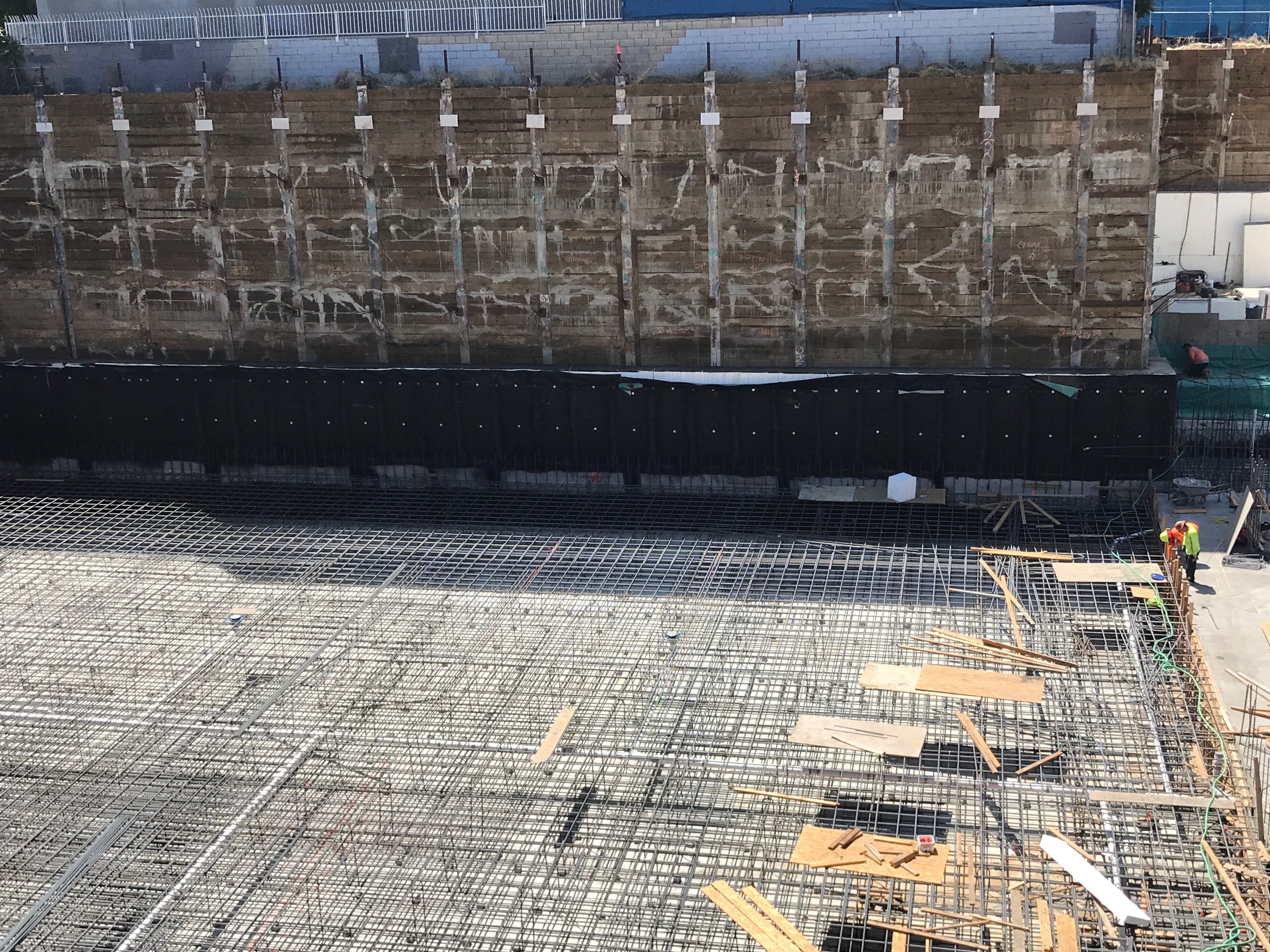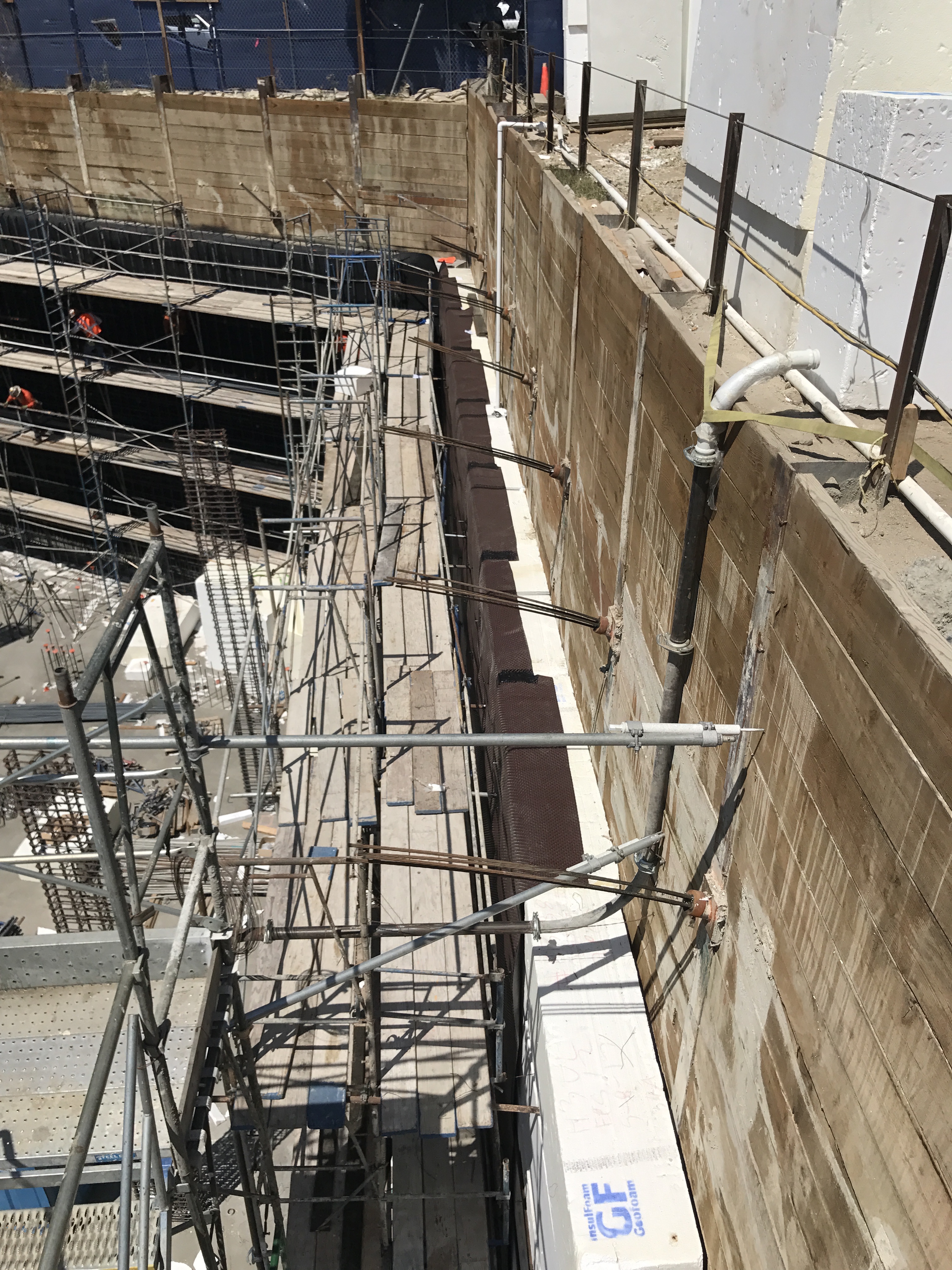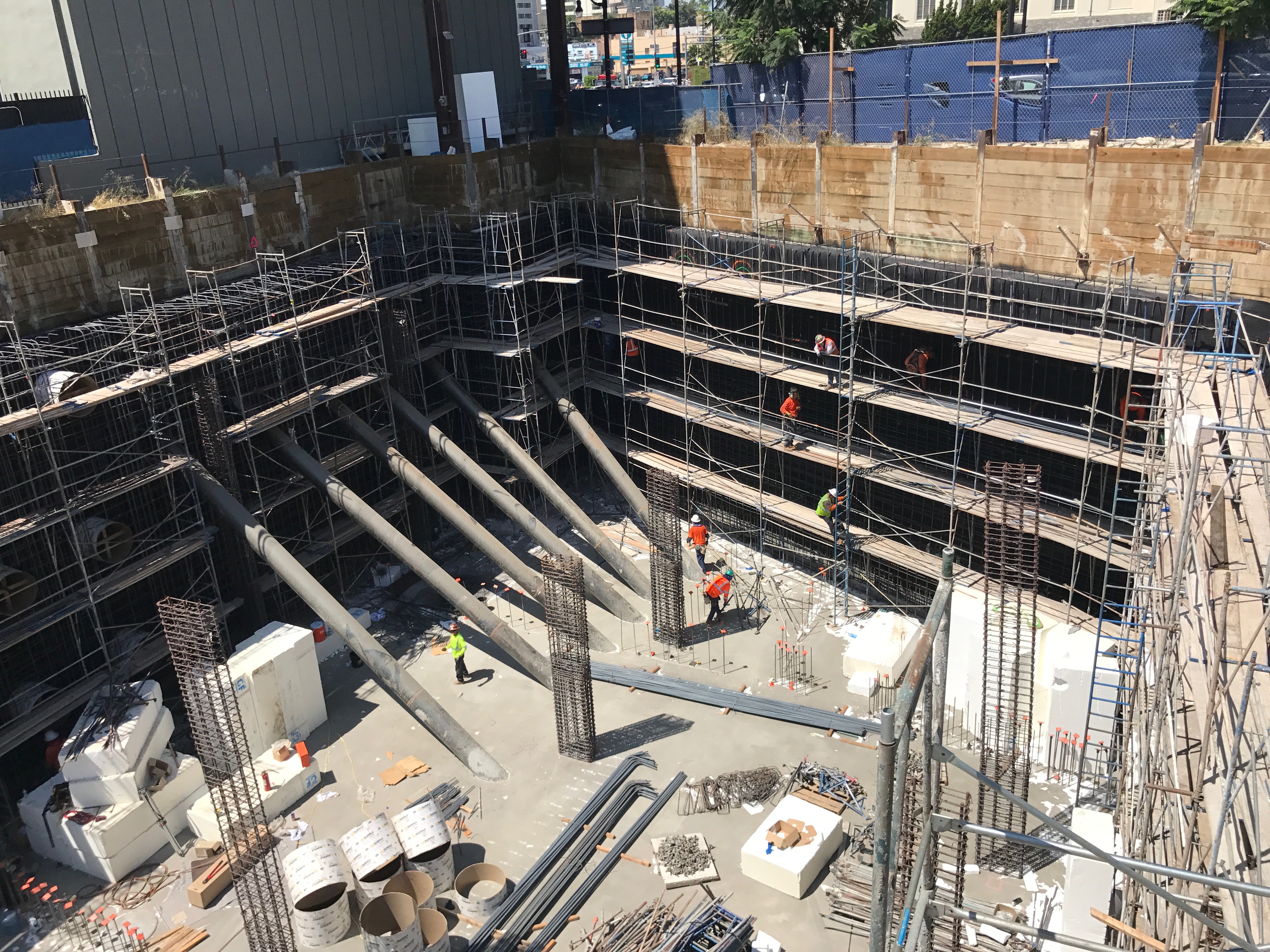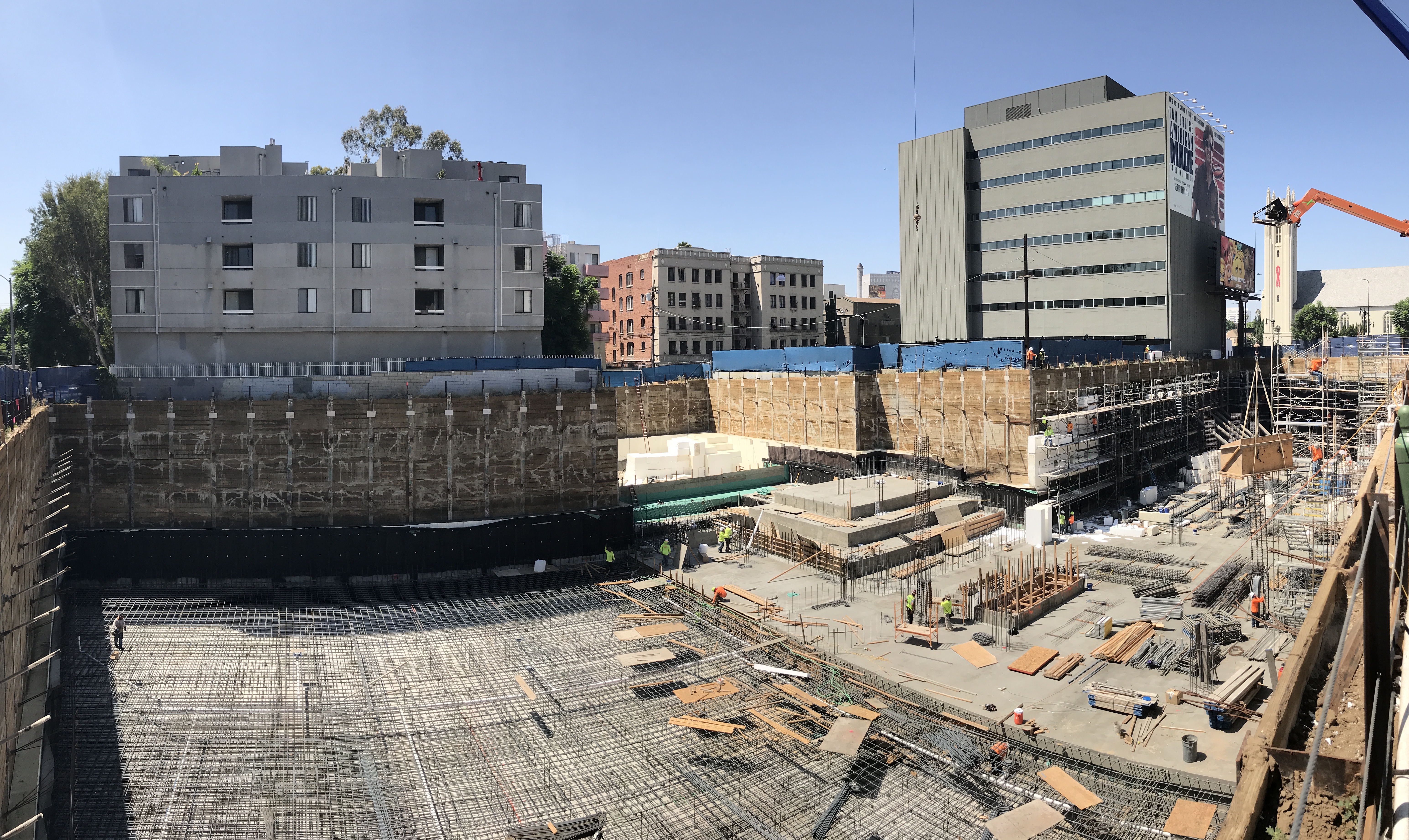Multifamily building waterproofing is incredibly important. Without it, your building can suffer from water infiltration which can lead to significant damage paired with costly repairs and lengthy delays. EPRO’s methods of underslab waterproofing can save your multifamily building from mold, mildew, foundation damage, excessive humidity and even reduce energy costs.
Especially in areas such as Los Angeles, waterproofing is extra important due to the humidity and mist in the air from the neighboring ocean, along with potential seismic movement from frequent earthquakes. EPRO has a 25-year track record of excellence in the LA area, and one pristine example of that success is the 1840 N. Highland project.

The property at 1840 N. Highland Ave. is a luxury multifamily complex in the heart of Hollywood, California. Only steps away from the world-famous Hollywood Bowl and Hollywood Boulevard, it is a 118-unit complex that sits on an 80,144 square-foot lot.
The project team included general contractor Frymer Construction, architect Arquitectonica, waterproofing consultant Terra-Petra, and certified EPRO applicator BMG.

1840 N. Highland was a challenging project because the Alquist-Priolo Earthquake Fault Zone ran right through the property boundary. Three stories of the structure were set to sit below grade and the construction team had to figure out how to reduce and eliminate seismic movement and its impact on the building's structure.
The waterproofing system had to be carefully detailed around many different pipe penetrations and several pits for both elevators and utilities. This was no problem for EPRO. 70,000 square feet of our E.Protect+ and E.Proformance below-grade solutions were able to mitigate the issues at hand.

“We collaborated with Terra-Petra, the waterproofing consultant, regarding the qualifications, review transitions, and fastening and draining considerations,” said David Frymer, President of Frymer Construction and the project’s general contractor. “EPRO was with us every step of the way.”
“EPRO helped us and the geotechnical consultant work through the issue regarding the north face of the building where the fault line divided the water table across the north and south sides,” said architect Ronald Rosell, AIA, with the project architect, Arquitectonica. “The fault acted like a subterranean waterfall, and EPRO gave us recommendations for how best to prevent that hydrostatic pressure and constant flow of water from impacting the structure.”
“There were some real twists to the project, including two fault lines under the cantilever of the building and the water table, which sat at different levels. EPRO saved us a lot of work and was on the site a great deal of the time,” said Josh Heidt, CP, with Terra-Petra, who was contracted to provide waterproofing consulting. “EPRO was deeply involved with this, responded promptly, and had the kind of case history we were looking for from a manufacturer on a multi-faceted project like this.”
“My experience with EPRO has been outstanding,” says Mostafa Sobhi, President of BM Builders and BMG Roofing, and Certified EPRO Applicator. “Their quick turnaround in answering any concerns and providing details due to changing field conditions has been a huge factor on how jobs like this can be successful, while also maintaining schedules. The EPRO team has always been there to support us from day one.”
Because of the Earthquake Fault Zone, the project team had to install a two-foot thick layer of Geofoam between the shoring system and the below-grade shotcrete walls. These were put into place in order to reduce and eliminate the impact on the building’s structure from any seismic movement.
EPRO E.Protect+ Underslab was implemented to protect the building foundation and blindside vertical walls for water intrusion considerations. E.Protect+ Underslab and Shoring systems are the first systems ever developed to combine in one system what others might utilize as three completely independent systems. It is designed for those who require the highest level of performance, such as the Highland project.
E.Protect+ transitioned into the E.Proformance Shoring system once the project was above the design water table. The project started to get more complex as EPRO’s negative-side waterproofing systems were applied directly to the Geofoam layers with horizontal penetrations and tie-backs.
The transition between E.Protect+ (hydrostatic) and E.Proformance (non-hydrostatic) was at two feet above the high historical water table level and extended to grade. It transitioned to a hot rubber horizontal waterproofing system, a landscaping area for planters and a stucco wall system.

Despite the high level of complexity involved in this project that had the presence of hydrostatic conditions, working closely with the project team enabled EPRO to provide an industry-leading 15-year, no-dollar-limit warranty to the developer. Providing a robust warranty like that encouraged the entire project team to collaborate with EPRO to anticipate and overcome any challenges in the field.
EPRO’s E.Series has built-in layers of redundancy achieved by combining different types of waterproofing materials to leverage the positive attributes of each and eliminate a continuous seam. It is now easier than ever for developers, designers and contractors to determine the ideal waterproofing system for their project.
Click here to start your own no-obligation assessment to see how EPRO’s waterproofing products can help protect your next project.
